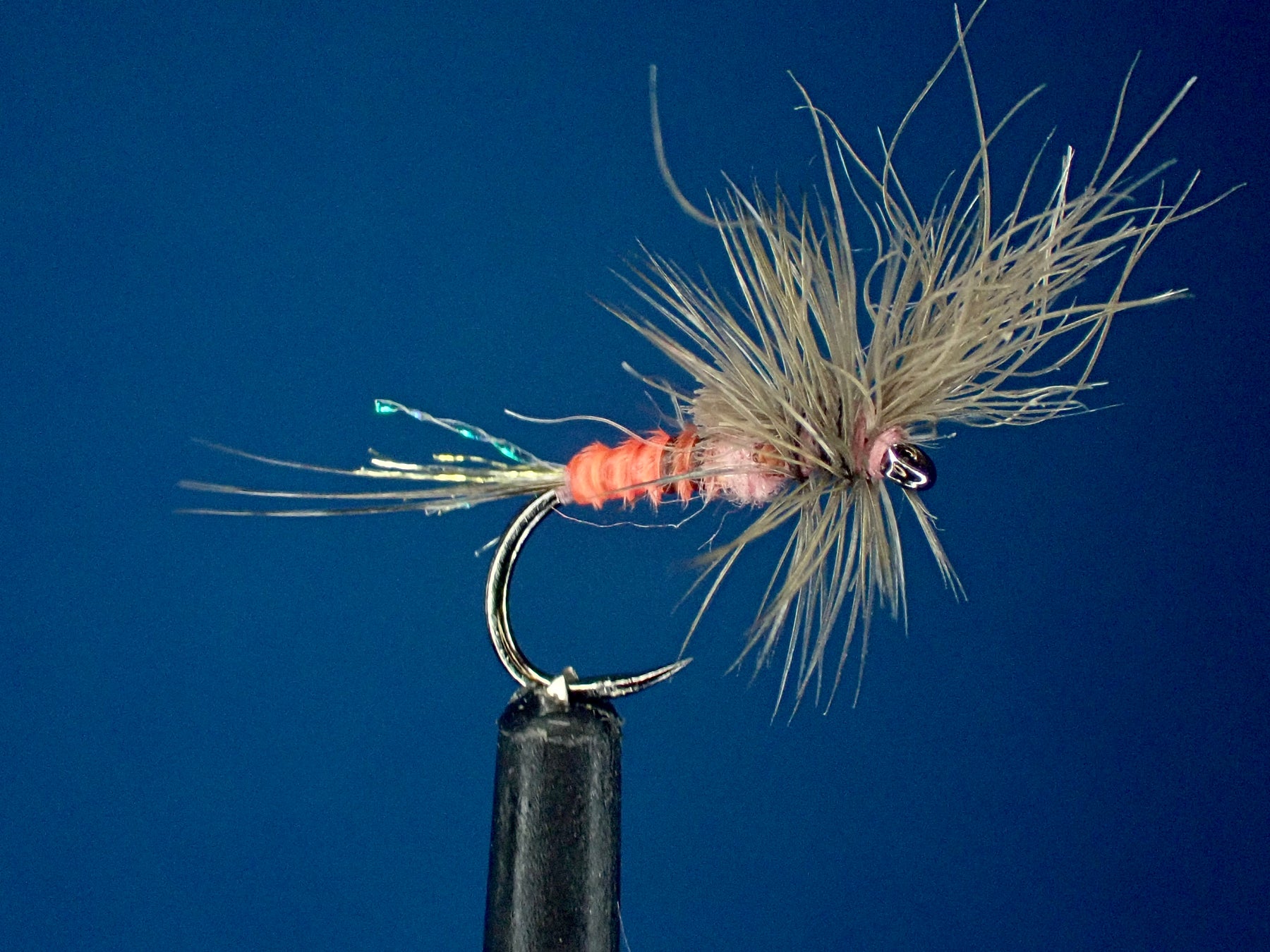
Pink Albert PMD Snowshoe Last Chance Cripple Pattern
The Pink Albert PMD variation fly is an excellent choice for anglers looking to target trout during a hatch. Specifically, the last chance cripple pattern is a great option for imitating an emerging insect that is struggling to free itself from its nymphal shuck. Today, we'll discuss the benefits of substituting snowshoe for CDC, the history of the last chance cripple pattern, and where and when to find Pink Albert PMDs.
First, let's talk about the benefits of substituting snowshoe for CDC. CDC, or Cul-de-Canard, is a popular material for creating flies that imitate emerging insects. It has excellent buoyancy and movement in the water, and has oils that make it water resistant trapping air bubbles, which makes it a great choice for creating realistic fly patterns. However, CDC can be expensive and difficult to work with. Snowshoe, on the other hand, is much more affordable and easier to use. It also has similar buoyancy and movement in the water, making it an excellent substitute for CDC.
The last chance cripple is a pattern developed by Rene Harrop, a renowned fly tier, innovator, and angler from Idaho. The pattern was created to imitate an emerging mayfly that had become trapped in its nymphal shuck and is struggling to break free. The fly is tied with a a tail and a trailing shuck made from Z-lon or Antron. Here we substitute again with a material. The body of the fly is typically made from a dubbing blend that matches the color of the insect you are imitating, but biot bodies are our favorite and work great on this pattern.
Now, let's talk about where and when to find Pink Albert PMDs. The Pink Albert PMD is a mayfly species that is found in many rivers and streams across the western United States but prominent on the Henrys Fork and South Fork of the Snake River in Southeast Idaho. They are typically found in slow to moderate-moving water and can be found in both riffles and pools. The Pink Albert PMD is most active during the summer months, typically from late June to early August. During a hatch, the insects will emerge in the late afternoon and into the evening.
When fishing a Pink Albert PMD hatch, it's important to pay attention to the weather conditions. The insects prefer warm, sunny days with little wind. If it's too cold or windy, the insects may not emerge, and if it's too hot, the hatch may be over before you even hit the water. It's also important to match the size and color of the fly to the insects you are imitating. The Pink Albert PMD is typically a size 14-18, with a pinkish-orange body and lighter wings.
Pink Albert Snowshoe Last Chance Cripple Tying Video
Materials List:
- Hook: Moonlit Premium Togatta Barbless ML102 sz14-18
- Thread: Semperfli Classic Waxed 12/0 Shell Pink
- Tail: Whiting CDL Dark Dun, or Hen Saddle Fibers
- Body: Magpie Premium Wild Barred Turkey Biot Pink Albert
- Thorax: Semperfli Kapok Dubbing Shrimp Pink
- Wing: Hareline Snowshoe Rabbit Foot Dark Dun
- Hackle: Whiting Medium Dun Rooster Saddle
In conclusion, the Pink Albert PMD variation fly tied as a last chance cripple pattern is an excellent choice for anglers looking to target trout during a hatch. Substituting snowshoe for CDC is a great way to create a realistic fly pattern without breaking the bank. The Pink Albert PMD can be found in many rivers and streams across the western United States during the summer months. Pay attention to the weather conditions and match the size and color of your fly to the insects you are imitating, and you'll be sure to have a successful day on the water.

Leave a comment